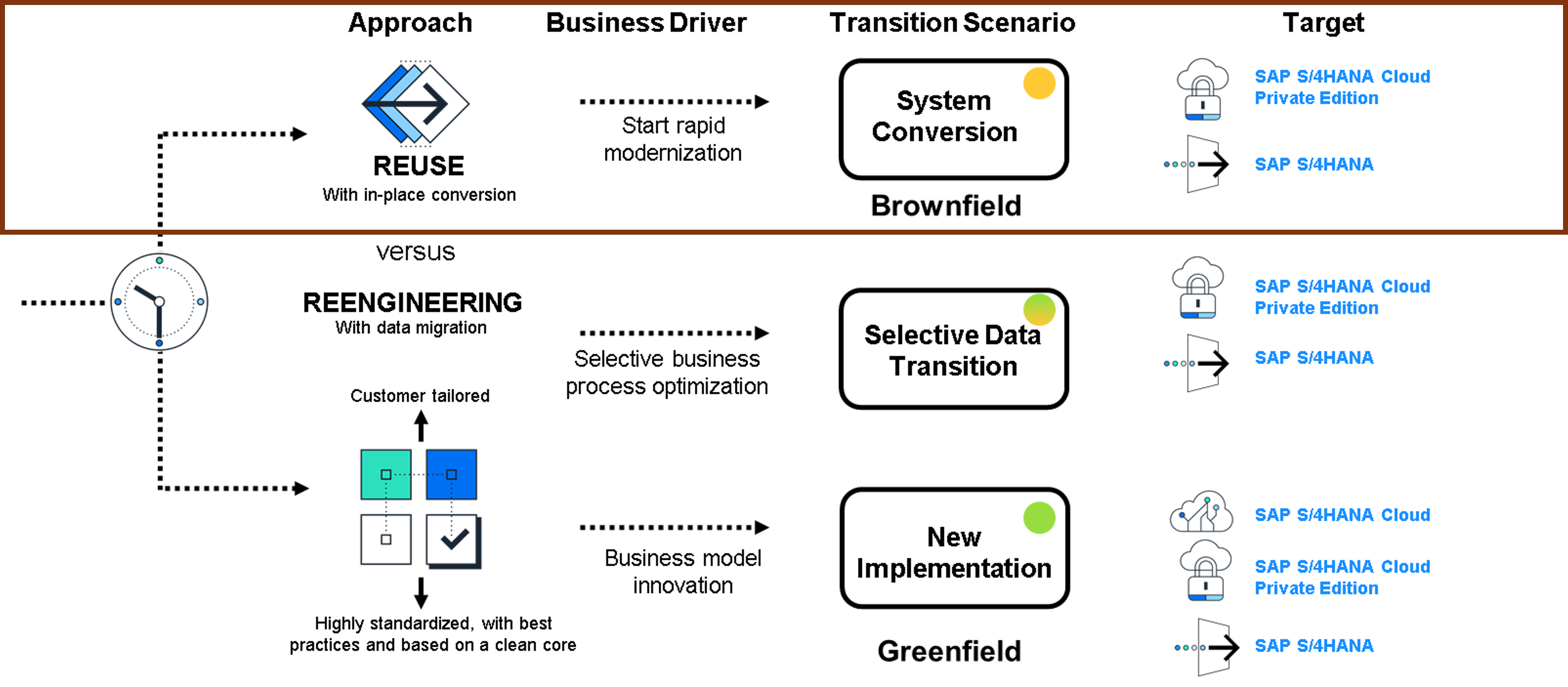August 20, 2024
#S/4HANA Conversion #Brownfield #ProjectManagement
Our experience with a Brownfield conversion to SAP S/4HANA
In a context where innovation and efficiency have become crucial issues for large companies, DatArt was approached by an international industrial company with a turnover of several billion to lead a strategic pilot project.
This company, with a multitude of production sites across the world, decided to modernize its operations by converting one of its sites to SAP's S/4HANA platform, via a Brownfield approach.
This project marks an important step in their digital transformation, aimed at harmonizing their processes while preserving the integrity of their existing systems.

What is a brownfield conversion?
SAP Brownfield Conversion is a technical approach to migrating an existing SAP system to S/4HANA while retaining all of the company's history and customized processes.
This method, which is faster and less complex than a complete migration, reduces interruptions and preserves investments made in existing systems.
However, it can also result in the transfer of outdated or inefficient data and configurations, requiring rigorous analysis to ensure that legacy assets are still suitable for current and future business needs.
The stakes
During our SAP Brownfield conversion project, we encountered three major challenges.
The first was the uncertainty related to the workload before the start of the information systems analysis. In fact, the system itself identifies the adaptations necessary for the conversion, which means that we do not know in advance what problems might arise or how to resolve them. This uncertainty complicates planning and requires great flexibility in project management.
The second challenge was that the conversion sometimes required changes to existing business processes . These changes required the active involvement of end users and rigorous change management to ensure successful adoption of the new processes.
A third challenge we encountered was related to the limitations of the system's automatic checks . While these are designed to identify and correct errors before conversion, they are not foolproof. Some errors escaped these initial checks, causing unexpected crashes and delaying the conversion process. This required additional manual intervention, thus adding to the complexity of the project.
The duration
The Brownfield conversion project spanned a period of one year, divided into two distinct phases.
The first phase, called " Explore ," lasted six months and took place in a Sandbox, allowing migration strategies to be evaluated and refined.
Then, the " Realize " phase , also lasting six months, made it possible to finalize the conversion in the different Development, Quality and Production environments.
Although the project was carried out in parallel with other initiatives, the spaced-out schedule provided valuable flexibility to absorb unforeseen events and adjust the strategy according to the challenges encountered, thus ensuring the success of this complex transformation.
Conclusion
Brownfield conversion is proving to be a practical and effective approach for companies looking to modernize their SAP system while preserving their existing environment.
This method is particularly advantageous when the system is already well maintained, both in terms of data and specific code.
However, it's essential to remember that SAP S/4HANA offers a wealth of genuine innovations. Once the conversion is complete, a subsequent phase can begin with the analysis, integration, and exploitation of the many innovations this new platform offers.
To take full advantage of the advanced capabilities of SAP S/4HANA and maximize the benefits of their digital transformation, companies have every interest in continuing their path towards innovation.



